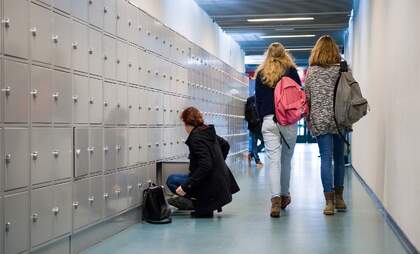Teachers concerned about ventilation in schools in the Netherlands
As the summer holidays draw to a close and children in the northern provinces in the Netherlands return to school, staff, and medical experts are concerned about the effectiveness of the coronavirus restrictions and the quality of ventilation in schools.
Coronavirus measures in schools in the Netherlands
On Monday, August 23, the first schools in the Netherlands reopen after the six-week summer break. As was announced after the most recent coronavirus press conference, restrictions have been relaxed for secondary schools and higher education.
The new rules state that fully vaccinated teachers no longer need to isolate after coming into contact with a person infected with COVID-19. Furthermore, only unvaccinated students and teachers in secondary schools will be required to self-test twice a week.
While there are no rules for children in primary schools, staff members and parents are expected to maintain 1,5-metre distance from one another. In secondary schools, face masks are mandatory in communal areas (i.e. corridors, the cafeteria) but not in classrooms. Teachers and students are also expected to adhere to the 1,5-metre distance rule.
Ventilation and air quality in Dutch primary and secondary schools
In March, several government ministers noted that ventilation systems were not up to scratch in over 9.300 schools across the country, with around 11 percent of buildings failing to meet legal air quality standards.
“Poor ventilation already causes illness and failure in 'normal times',” says Daniëlle Woestenberg, chair of trade union CNV Education. “You would expect that corona would have been used as a catalyst for solving this problem that has existed for years. But far too little is happening.”
Meanwhile, Thijs Roovers, director of the General Education Union (AOb), says there hasn’t been enough time to make any real structural changes to improve ventilation, and highlights the issue with the government’s advice to open windows to let in fresh air. “We have to be careful that we don't end up in a situation where students in thick sweaters and jackets are shivering in class,” Roovers says.
Schools offered financial support from Dutch government
Many in the education sector continue to complain about the standard of ventilation in Dutch schools. According to figures from CNV Education, only 33 percent of teaching staff in primary schools and 34 percent in secondary schools feel their school has sufficient ventilation.
In order to improve ventilation and reduce the spread of coronavirus in schools, the Dutch government earmarked 360 million euros for improving the ventilation infrastructure. The scheme allows schools or municipalities to apply for government subsidies to cover 30 percent of the costs (up to one million euros) of improving ventilation and air quality in schools. Earlier this month, Education Minister Arie Slob announced that an additional 100 million euros would be allocated to the scheme this year.
On Monday, schools in the municipalities of Groningen, Friesland, Drenthe, Overijssel and North Holland, as well as most municipalities in Flevoland, Hattem in Gelderland, and Eemnes and Abcoude in Utrecht. The children in the central region will return to school on August 29, and the southern region on September 5.
By clicking subscribe, you agree that we may process your information in accordance with our privacy policy. For more information, please visit this page.



COMMENTS
Leave a comment